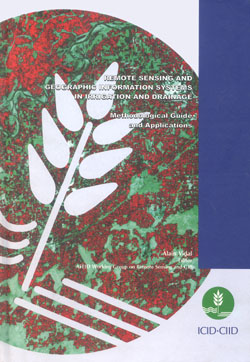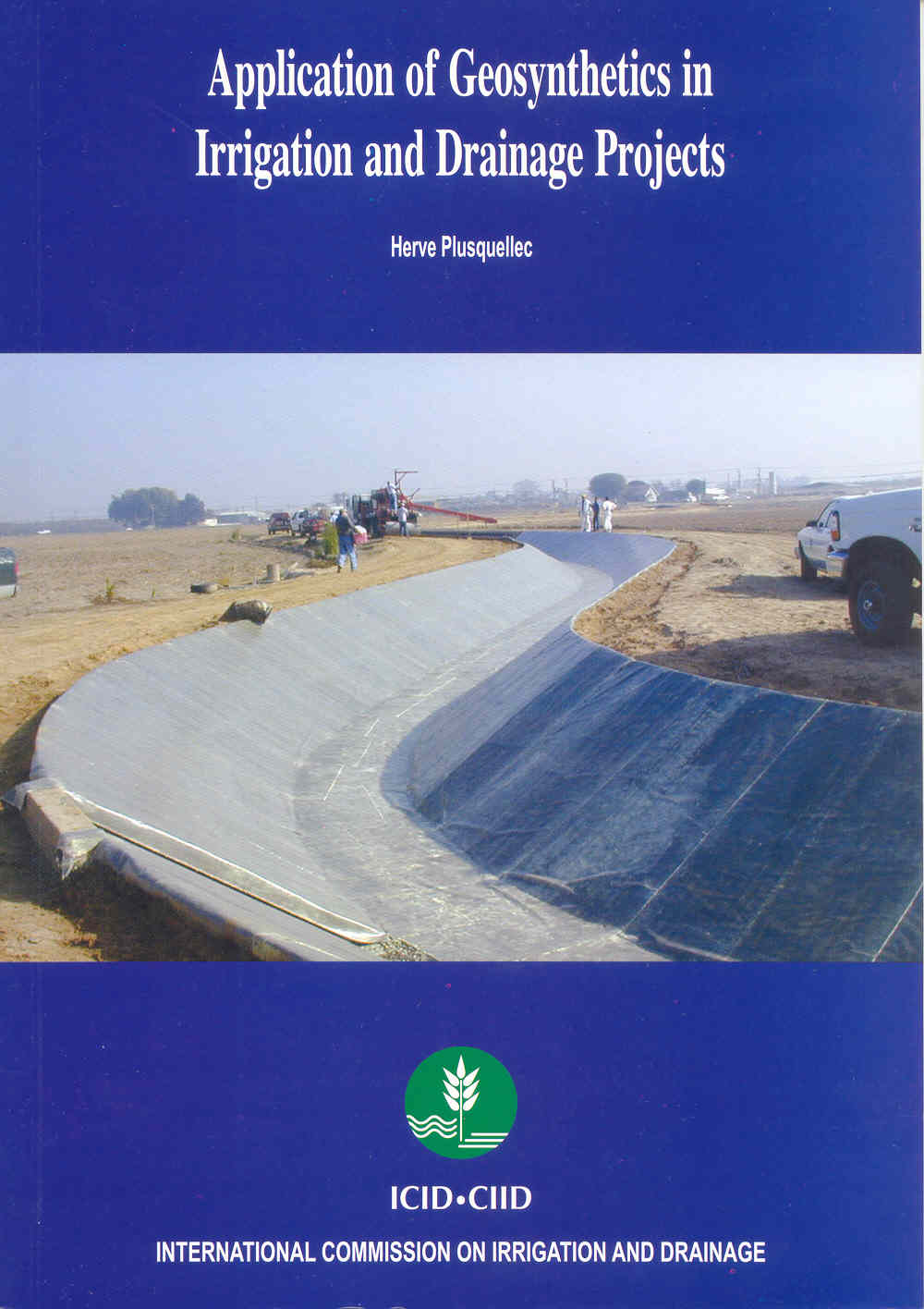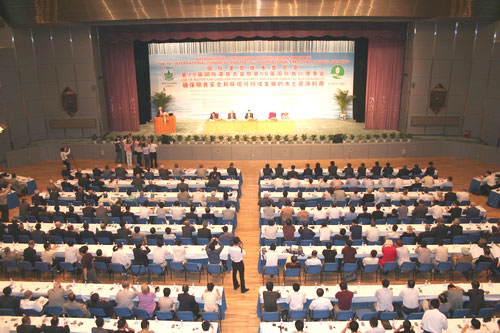
Excess water in the crop root zone soil is injurious to plant growth. Artificial drainage is essential on poorly drained agricultural fields to provide optimum air and salt environments in the root zone. Crop yields are drastically reduced on poorly drained soils, and, in cases of prolonged waterlogging, plants eventually die due to a lack of oxygen in the root zone.Waterlogging in irrigated regions may result in excess soil salinity, i.e., the accumulation of salts in the plant root zone.
Sources of excess soil water that result in high water tables include: high precipitation in humid regions; surplus irrigation water and canal seepage in the irrigated lands; and artesian pressure.Agricultural drainage is the removal of excess water from the soil surface and/or soil profile of cropland, by either gravity or artificial means. In some soils, the natural drainage processes are sufficient for growth and production of agricultural crops, but in many other soils, artificial drainage is needed for efficient agricultural production.
Agricultural drainage improvement can help reduce the year-to-year variability in crop yield, which helps reduce the risks associated with the production of abundant, high quality, affordable food. Improved access of farm equipment to the field provides more time for field activities, can help extend the crop production season, and helps reduce crop damage at harvest.
Agricultural drainage conditions around the world can be grouped according to three agro-climatic zones: the temperate zone, the arid and semi-arid zone and the humid and sub-humid zone.
In the temperate agro-climatic zone the major role of drainage is to prevent waterlogging, i.e., excess water in the root zone of crops from surplus rainfall. It also serves the purpose of improving the traffic ability of the farms for farm machinery etc. The field drainage system is generally sub-surface.
In arid and semi-arid zone the function of drainage is to prevent irrigation induced waterlogging and salinization of soils. These zones suffer from population pressure and intensive agriculture through irrigation is resorted to which makes drainage provision essential to maintain the sustainability of agricultural lands.
In humid and semi-humid regions the role of drainage is a combination of waterlogging control, salinization prevention and flood protection. Generally open drainage systems are applied as the rainfall intensities are so high that the sub-surface drainage becomes insufficient or exorbitantly inexpensive.
Related items you may like


















































































Irrigation
Sources of Irrigation
Irrigation History +
Sources of Irrigation +
IMPROVING SOIL MOISTURE +
Ponds +
Tanks +
Diversion Weirs +
Dams and Reservoirs +
Groundwater +
Conjunctive Water Use +
Wastewater +
Poor Quality Water +
Application of Irrigation water
Canal Irrigation +
Flood Irrigation +
Deficit Irrigation +
Supplemental Irrigation +
Sprinkler Irrigation +
Drip Irrigation +
Lift Irrigation +
Centre Pivot Irrigation +
Tidal Irrigation +
Micro-Irrigation Technologies for Small Holders +
Automatic Irrigation Systems +
Pressurized Irrigation +
Irrigation in Viticulture +
Purpose of Irrigation
Instruments and implements of Irrigation
Pumps +
Centrifugal Pumps +
Submersible Pumps +
Turbine and Jet Pumps +
Conveying Pipes +
Sprinklers +
Drippers +
Canal Automation Systems +
Irrigation Management
Economics of Irrigation System +
I&D System Types +
I&D Investment Functions +
I&D Management Issues +
Participatory I&D Management +
Equity in Irrigation +
Irrigation Services +
Irrigation and environment
Pollution and Irrigation +
Irrigation and Climate Resilience +
Environmental Aspects of Irrigation +
Environmental Impacts of Irrigation +
Green Lawn Irrigation +
Safe Use of Waste Water in Irrigation +
Organic Agriculture +
Soil Health +
Soil Health Management +
Quality of Irrigation Water +
Capacity Development
Drainage
Drainage Types and Systems
Agricultural Drainage +
Field Drainage systems +
Canal Irrigation and Drainage +
Surface Drainage Systems +
Subsurface Drainage +
Mole Drainage +
Bio-Drainage +
Regional Bio-Drainage +
Drainage Issues
- Agricultural drought
- Drainage area, Drainage basin, River basin, Catchment area, Catchment basin, Catchment, Watershed
- Water parting, Drainage divide, Divide, Watershed divide, Watershed boundary, Topographic divide
- Yield of drainage basin, Annual yield of drainage basin
- Drainage modulus, or Drainage coefficient
- External drainage
- Internal drainage
- Bio-drainage
- Drainage head
- Agricultural lime
- Agricultural slag
- Endogenic drainage
- Allogenic drainage
- Endoreic drainage
- Areic drainage
- Exoreic drainage
- Drainage gallery
- Drainage wells
- Horizontal drainage blanket, Pervious blanket, or Drainage filter
- Cross-drainage work, or Drainage crossing
- Level crossing, or Level drainage device
- Syphon aqueduct, Drainage syphon, Cross drainage culvert
- Drainage overpasses
- Venturi flume drainage crossing
- Drainage culvert, or Supply culvert
- Cross drainage
- Inverted drainage well, or Disposal well
- Irrigation through buried drains, Irrigation-drainage, or Vallenhove process
- Drainage
- Drainage channel
- Artificial drainage
- Lowland drainage
- Agricultural land drainage
- Drainage system
- Closed-drainage area, Blind drainage area, or Non-contributing area
- Drainage benefit
- Degree of drainage
- Field drainage
- Field drainage system
- Land drainage
- Natural drainage system
- Seepage drainage
- Subsurface drainage system
- Open channel drainage
- Surface drainage
- Main drainage system
- Drainage fittings
- Drainage pump sump
- Drainage trench
- Drainage head
- Horizontal subsurface drainage system
- Natural drainage or Natural drainage capacity
- Improved drainage or Artificial drainage
- Random drainage system
- Trenchless drainage
- Open-channel drainage
- Convergent drainage pattern
- Natural drainage systems, or Random drainage systems
- Cutoff drainage system, or Intercepting drainage system
- Herringbone drainage system
- Gridiron drainage system
- Double-main drainage system
- Composite drainage system
- Grouping drainage system
- Zigzag drainage system
- Cross-slope ditch system, or Drainage-type terraces
- Drainage-density
- Drainage pattern
- Superposed drainage, Super imposed drainage or Inherited drainage
- Subsurface drainage, Under drainage, Subsoil drainage, Underground drainage, or Covered drainage
- Relief drainage system
- Convergent drainage system
- Elkington drainage system, Sink-hole drainage
- Rerolle drainage system
- Across-the-slope drainage system, or Keythrope drainage system
- Vertical drainage, or Inverted well
- Mole drainage
- Surface drainage system
- Drainage coefficient, Drainage modulus or Drainage design rate
- Drainage design rainfall
- Drainage efficiency
- Drainage season
- Angular drainage pattern
- Arterial drainage
- Dendrite drainage
- Drainage boards (also called prefabricated drains)
- Slot drainage
- Radial drainage pattern
- Trellis drainage pattern
- Drainage density
- Vertical subsurface drainage system
- Drainage pumping station, Drainage pumping plant
- Agricultural credit
- Drainage terrace, Drainage control terrace, Interception and diversion terrace, Runoff control terrace, or Channel terrace
- Agricultural pollution
- Agricultural waste
- Land drainage
- Design drainage rate
- Soil drainage status
- Excessive drainage
- Imperfect drainage
- Underdrainage
- Singular layout drainage design
- Natural drainage layout
- Composite layout drainage system
- Mole drainage
- Free drainage
- Poor drainage
- Drainage basin
- Agricultural levees
- Agricultural water use
- Agricultural investigations










